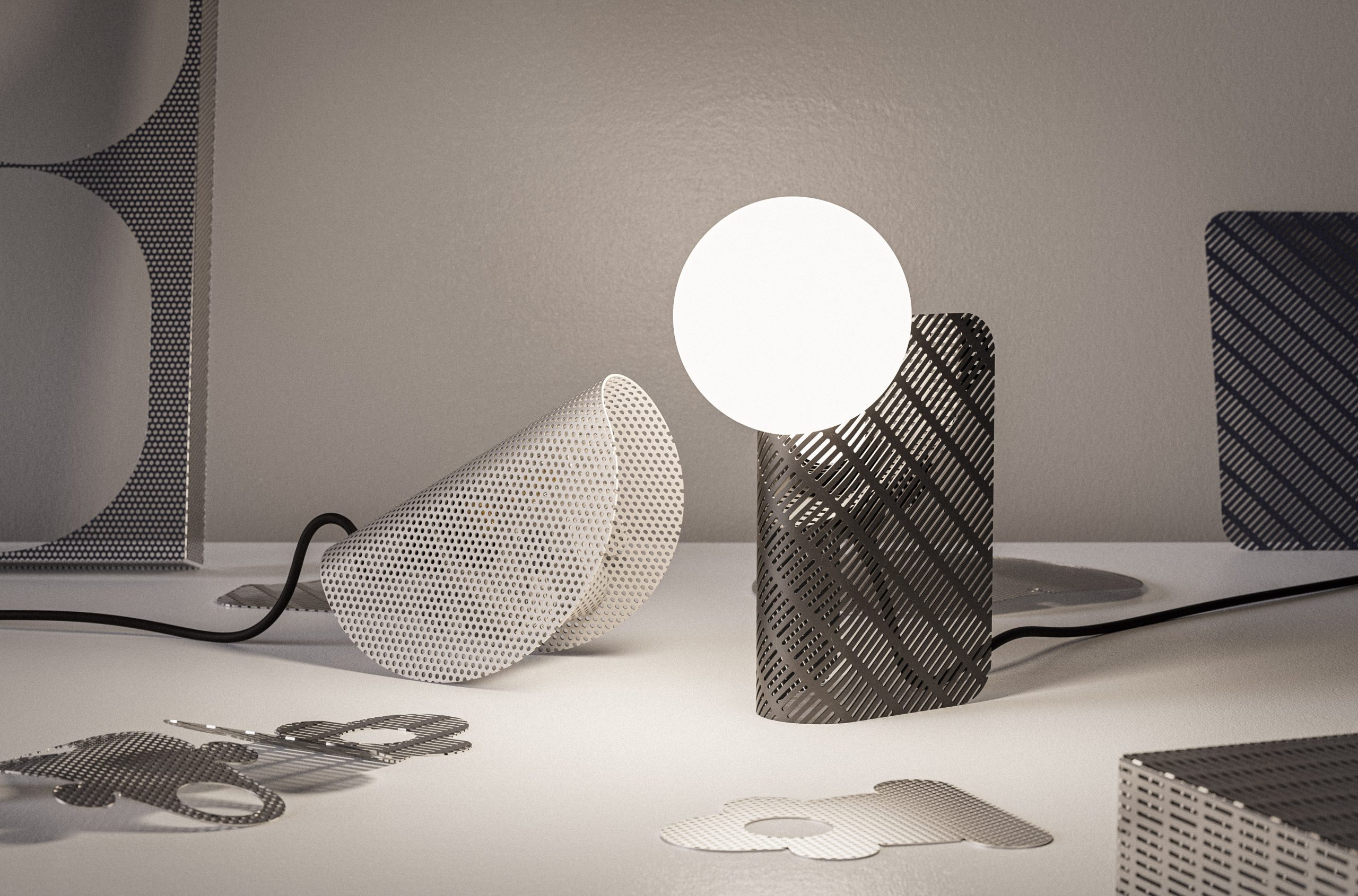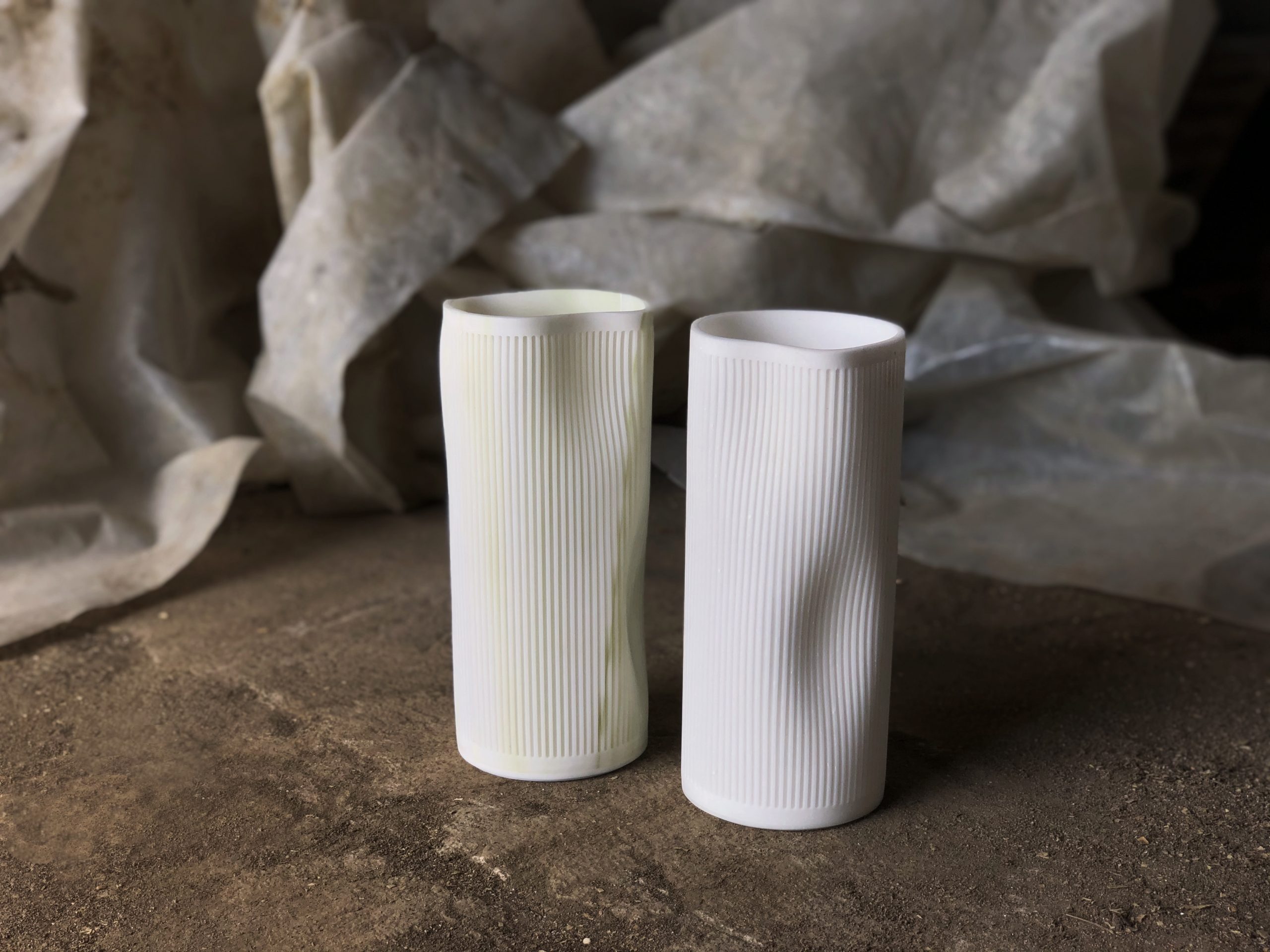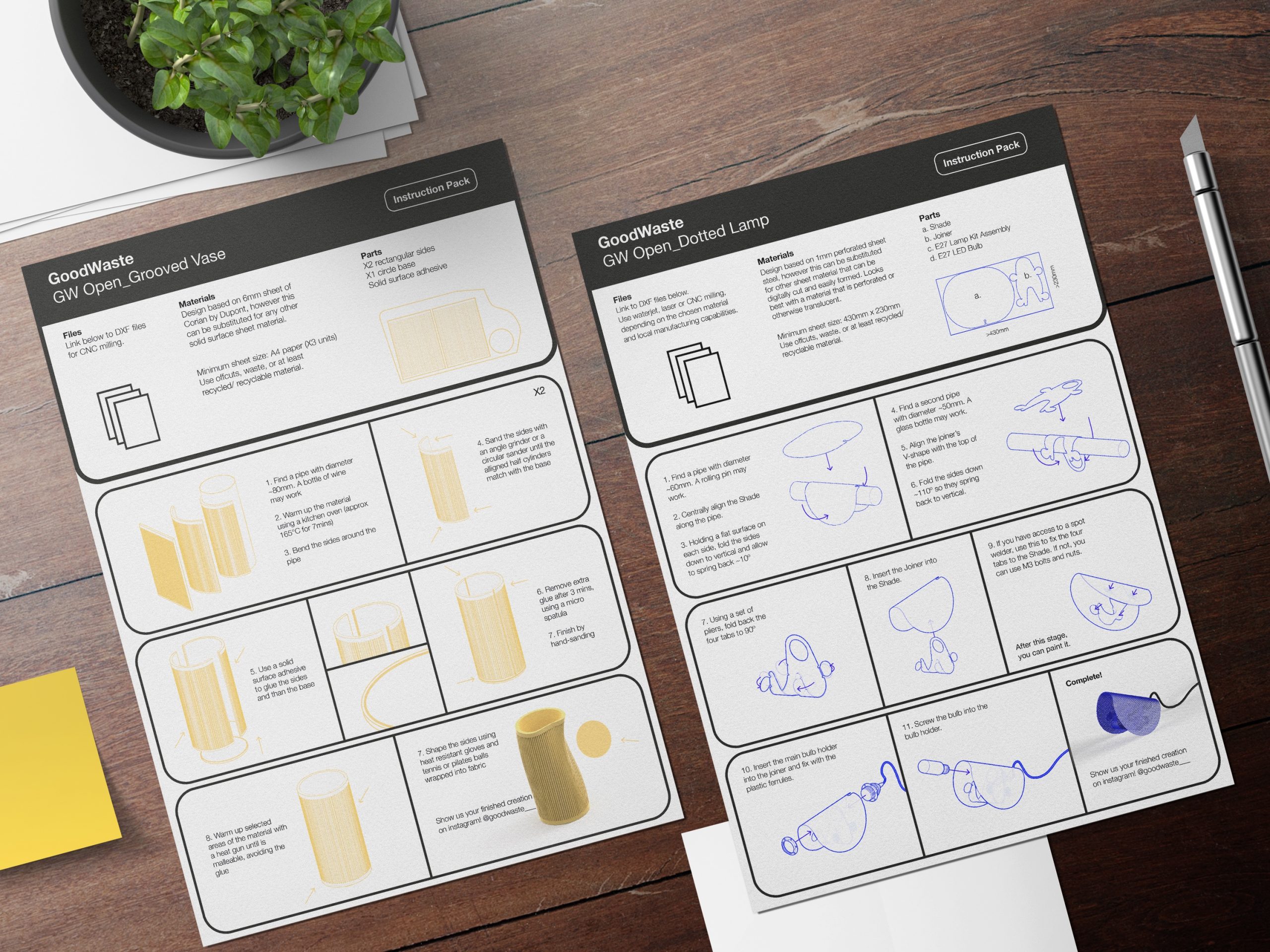GoodWaste

Useful information
- Team members
- Ambra Dentella Ewan Alston Rafael El Baz
- Country
- United Kingdom
- Keywords
- Circular economy hyper local distributed manufacturing made from waste
Short Description
Super circular retail – using waste material from Selfridges to make products for sale in store.
Detailed Description
GoodWaste promotes a new model of local, circular manufacturing; transforming so-called ‘waste’ materials into new objects and interiors through design.
For our second project with the renowned department store, Selfridges & Co, we have produced a collection of homeware (inc. lamps, vases, bowls and candles) made using waste from inside, or local to, the store itself. The lamps were made using perforated steel that was reclaimed from a recent store fit-out, while the vases were made using offcut Corian from a nearby manufacturer. The entire collection is being produced in London and will go on sale on Oxford Street.
Beyond the initial launch, plans will be made available through our website for downloadable instruction packs for making some of the products with local waste materials elsewhere in the world. Most of the products are made from sheet materials that can be substituted for a local equivalent.
In production, launching Sep 2020. Final product imagery available in 1month.
Project Details
- Does your design take social and cultural challenges and human wellbeing into consideration?
We are helping to move society towards a circular economy, which would have far reaching environmental (and therefore cultural and social) benefits. In terms of direct action on social challenges, GoodWaste also runs workshops where we teach local residents about circularity including making techniques and materials local to them, with the aim of connecting communities and teaching them potentially valuable skills. We have council funding to deliver a series of workshops shortly after the launch of this project so both projects will (and have) fed into each other.
- Does your design support sustainable production, embodying circular or regenerative design practices?
Not only are our products made primarily from waste materials, we employ strict circular design principles in the development of them. We have our own zero-waste policy where we use the offcuts from one product in the making of another; we avoid adhesives or binders unless absolutely necessary; we design for disassembly and end-of-life. For example, the lamps’ electronics components can be easily unscrewed and the only two other parts are welded together, staying mono-material and suitable for recycling.
- Does your design use principles of distribution and open source?
As the collection is so connected to a specific part of London (even a specific store), it would defeat the point to sell the products worldwide. So to cater for outside interest, we will distribute the designs online, in the form of CAD files and instructions, for a small fee compared to the cost of buying in-store. The instructions point out that while the designs were based on this and that specific material, they can (and should) be substituted for local equivalents. Cutting can be done by local makerspaces or manufacturers (CNC, laser, waterjet – depending on the material) and common cylindrical objects such as wine bottles have been suggested as tools/guides for the forming processes, in order to make them as accessible as possible. We will happily accept any improvements or customisations suggested by buyers and would look to reward contributors for this. Further, we are exploring the possibility of users being able to input their desired dimensions (including for example the bulb size for the lamps), and the CAD file parametrically updating to suit, before the website outputs the appropriate, customised files. As a young, small business, we are yet to discover a viable business case to make the designs truly open source and free, however would love this to be possible.
- Does your design promote awareness of responsible design and consumption?
We hope so. Since our last collection for Selfridges, they have given special labelling to our products in-store to bring attention to their circularity. Our packaging will tell the story of each product and will also link to our website which will show footage of the material journey from waste to product. Further, our project is being promoted as part of a broader sustainability initiative by Selfridges so we hope their vast amount of customers and followers will be made aware of more responsible design and consumption practices.
Images


